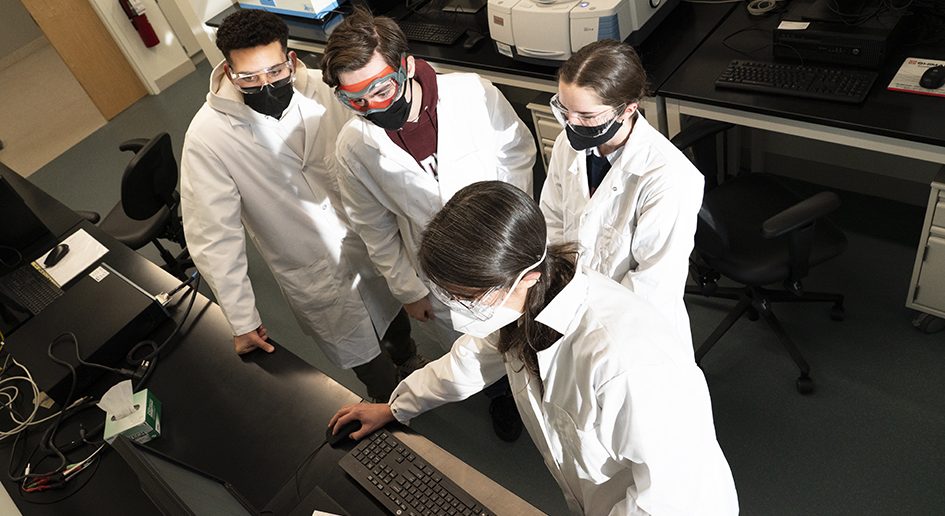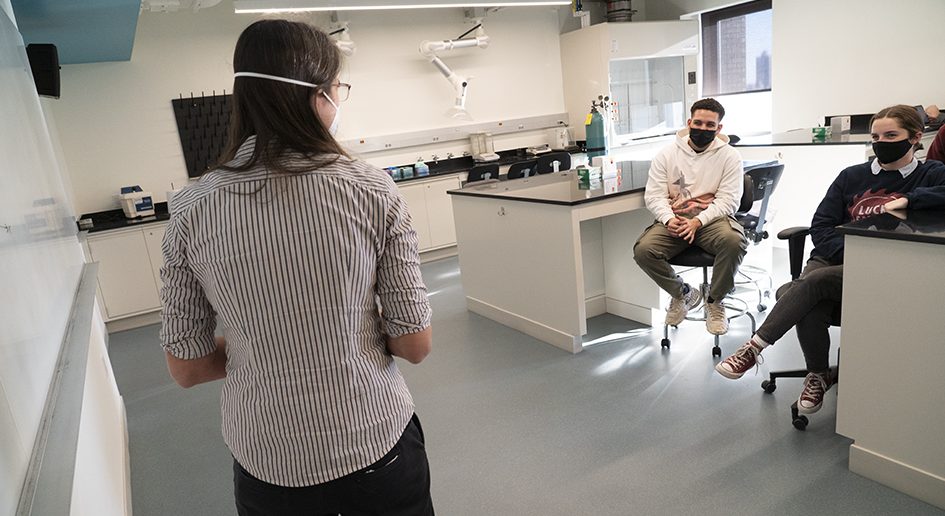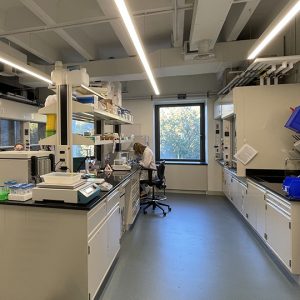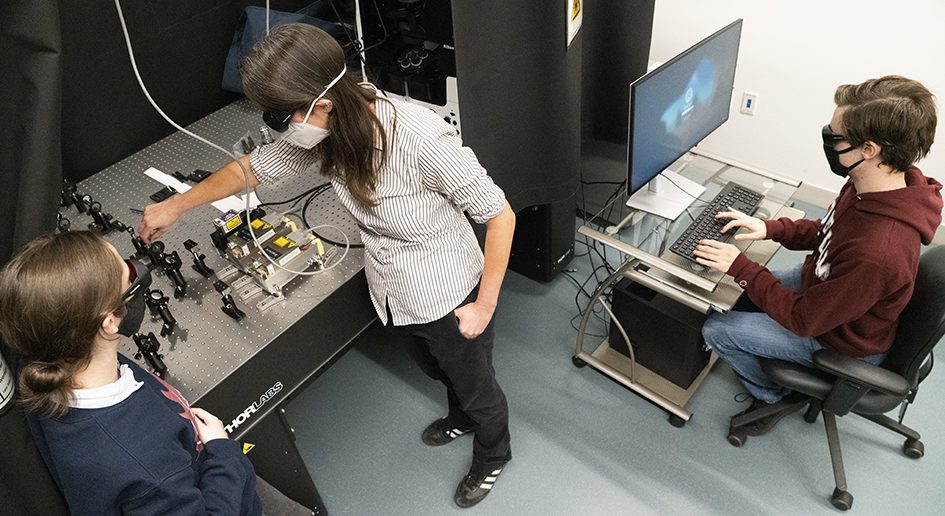Junior Michael Foster said the space provides an excellent environment for aspiring scientists.
“It’s cool to always be around the equipment and familiarize yourself with it, because a lot of us are looking to go into research careers and this is the sort of the setting that we all want to be in,” he said.

Chemistry Chair Ipsita Banerjee, Ph.D., said state-of-the-art laboratories and instrumentation are critical in the University’s effort to advance STEM research and education.
“[This] lab space can enhance the learning experience of students at Fordham, as it gives them an opportunity not only to conduct experiments required for their physical chemistry laboratory courses, but also for research. It allows for a collaborative learning environment for students to be immersed deeply in science,” Banerjee said.
Robert H. Beer, Ph.D., associate professor of chemistry and the FCRH associate dean for STEM and pre-health education, spearheaded the renovation effort when he was department chair and credited Banerjee with seeing the project through to completion.
“We’ve never had an upper-division teaching lab up here for the advanced students, we’ve only had instructional labs downstairs for first- and second-year students. Having the advanced students up near the faculty offices and their labs helps integrate them into department life,” said Beer. “We worked with faculty members on designing the instructional lab and made sure that could also be versatile and shared with, say, material sciences.”

Over the course of the last decade, STEM facilities at Rose Hill have been enhanced significantly, with the renovation of labs on the second floor of JMH and new state-of-the-art equipment. In 2017, a $10.5 million gift from the late Stephen E. Bepler, FCRH ’64, and his wife, Kim Bepler, funded four chairs in science and math, including a chair in chemistry for professor Joshua Schrier, Ph.D. STEM is also a priority of the University’s current fundraising campaign, Cura Personalis | For Every Fordham Student.
Renovations on the sixth floor began with two studies on the potential of the 1000-foot instructional lab that led to $500,000 in CUSP strategic planning funding secured by FCRH Dean Maura Mast, Ph.D., in 2019. The University administration then committed approximately $1.5 million to build out the balance of the renovations, including new labs for Schrier, Nicholas Sawyer, Ph.D., assistant professor of bioorganic chemistry and chemical biology, and Elizabeth Thrall, Ph.D., assistant professor of biophysical chemistry. (Mulcahy Hall’s computer labs also received a major upgrade in 2018, thanks to funding from New York state secured by Fordham’s Office of Government Relations and Urban Affairs.)

State-of-the-art facilities are integral in attracting professors in STEM fields like chemistry, said Beer. Thrall, a relatively recent hire along with Schrier and Sawyer, agreed. When she was considering coming to Fordham from a post-doctoral research fellowship at Harvard University, she was told there was an administrative commitment to improve and restructure the science labs. As an example, she was shown the recently renovated fifth-floor lab of Julia Schneider, Ph.D., assistant professor of organic and materials chemistry.
“She had a very nice lab renovated to her requirements and I was told that the same would be possible for me, so there was there a bit of a leap of faith … but that’s exactly what happened,” she said. “I was also very impressed by the level of research that faculty were doing with undergraduates. It made me feel there’s really this momentum for research in the department that was already at a high level.”
Beer said that renovations can only help add to that momentum.
“The advantages with the new facilities are that you can show them to potential faculty and students and say, ‘This has been done, this has been done, and this has been done,’” he said, gesturing to the expanse of pristine white interiors.

But interiors alone don’t attract faculty. Equipment does. In the case of Thrall, it’s a single-molecule fluorescence microscope that she is still assembling in a room next to her lab. She also pointed to the spectrometers in the instructional lab as an important stepping stone for students to understand the practicalities of chemistry. The lab has ultraviolet-visible and Fourier-transform infrared spectrometers, which use different kinds of light to probe different information about materials.
“The students learn the theory behind spectrometers in my class, and then actually use the tool in their research,” she said. “That kind of synergy is powerful. A student who’s not doing research may not really see the point, but a student who’s using the equipment to monitor bacterial growth may begin to see the purpose.”
As for her own work, she said, without the equipment and lab space, her research would not be possible.
“The measurements I make are very sensitive; I need very specific equipment. Not having that equipment or not having the infrastructure to support the research would make it impossible to do what I do at institutions that can’t provide that kind of support,” she said.

Several students using the labs said the renovated facilities are an integral part of their studies. Junior chemistry major Emily Holmes said she spends most of her time in the clean-lined space with southern windows overlooking most of the Bronx and the Manhattan skyline in the distance.
“I spend my entire day pretty much on the sixth floor. I’ll do my work in the lounge, then I’ll come in here, go to class, and then I’ll go to do research after,” she said.
Junior Emil Jaffal said the effort sends an encouraging message to students in the sciences. “It shows there’s a focus on STEM at Fordham,” he said.
Banerjee said she feels it’s the beginning of a new era for the sciences at the University.
“We hope to see more changes like this so that STEM students and faculty can thrive and make a lasting impact in science and technology,” she said.
To make a gift supporting STEM initiatives at Fordham, visit our Cura Personalis giving page.


